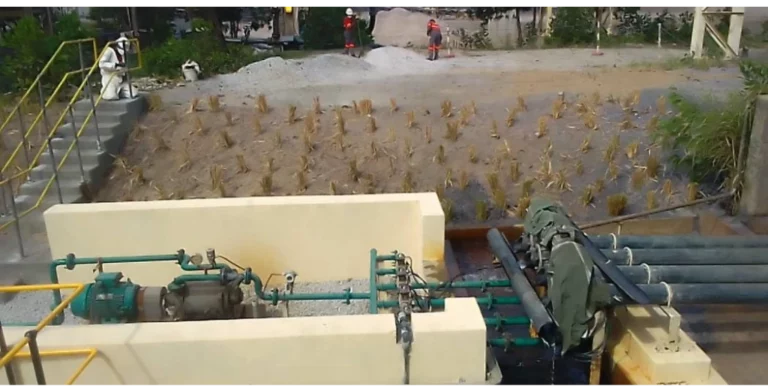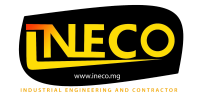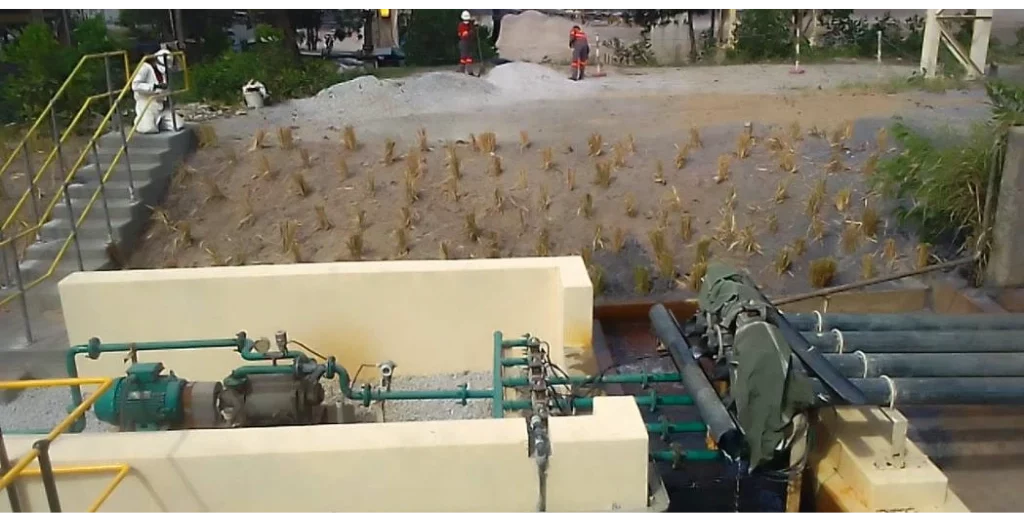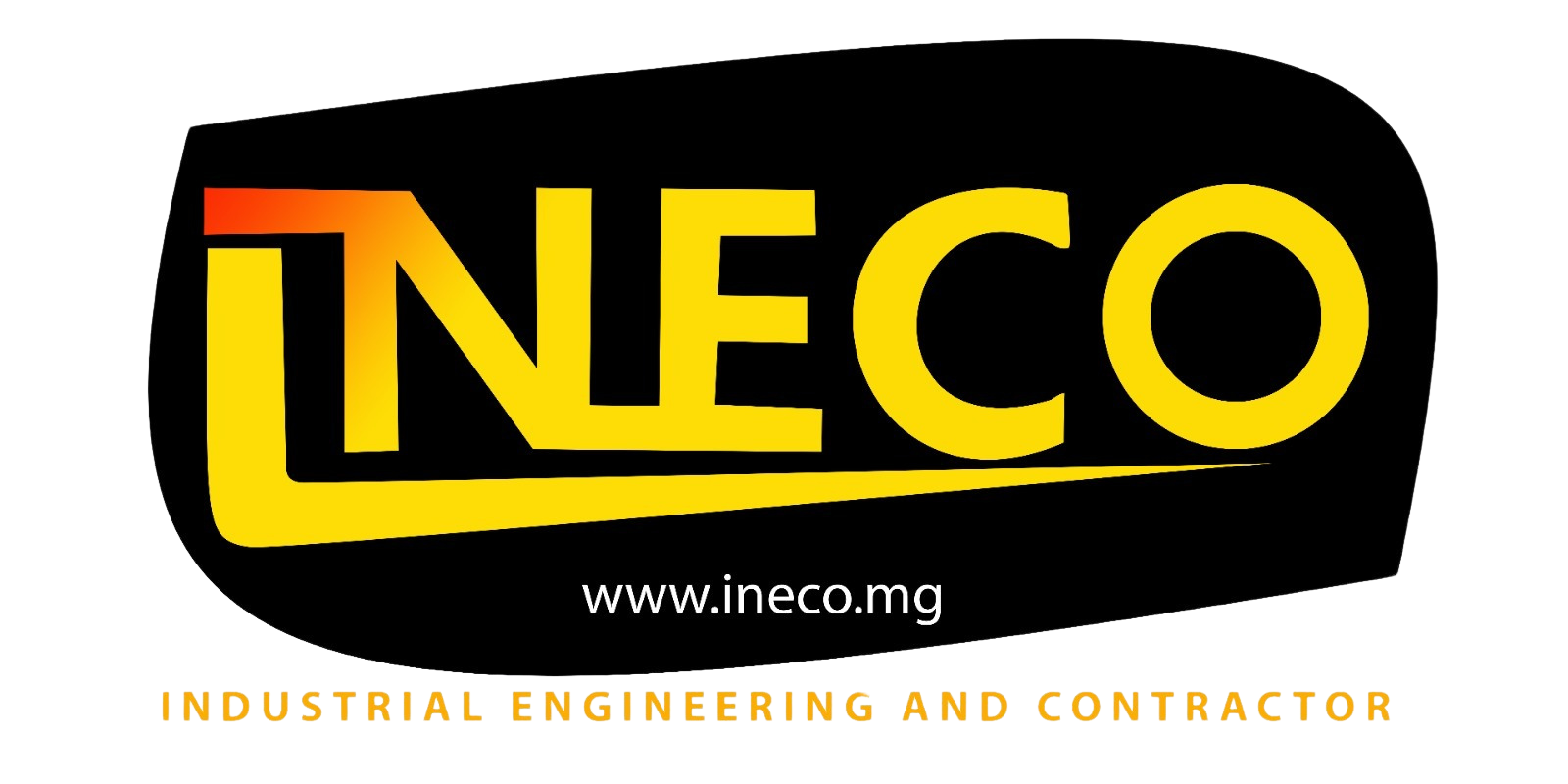In the industrial world, every detail counts – especially when it comes to thermal comfort, fluid distribution and energy regulation. All too often, poorly designed industrial plumbing and air-conditioning systems lead to costly losses: excessive energy consumption, recurring breakdowns, production stoppages.
This is where INECO comes in, transforming energy-hungry installations into genuine industrial performance tools. Thanks to our in-depth expertise in HVAC (heating, ventilation and air conditioning) systems and industrial hydraulic networks, we design tailor-made solutions to meet your site’s specific needs.
Why are plumbing and air-conditioning essential in industrial environments?
The challenges of well-designed industrial plumbing
Industrial plumbing goes far beyond conventional water systems. It involves the complex management of technical fluids (hot, cold, glycoled or treated water), often at varying pressures and temperatures.
A poor choice of materials, inaccurate sizing or faulty regulation can result in :
- A drop in the performance of thermal equipment,
- Premature deterioration of installations,
- Over-consumption of energy, which is difficult to detect.
👉 Well-designed plumbing is above all a high-performance hydraulic system, designed to last, easy to maintain and optimized for the realities of your production.
Air conditioning and thermal comfort: more than a luxury, a performance requirement
In industrial environments, thermal control is crucial to ensure both the comfort of operators and the smooth operation of sensitive equipment.
Air conditioning plays a vital role in :
- Cooling machines,
- Managing the temperature of production areas,
- Preventing thermal imbalances harmful to manufacturing quality.
⚠️ But beware: an inefficient industrial air-conditioning system can lead to astronomical costs. Hence the importance of regular industrial air-conditioning maintenance, appropriate controlled mechanical ventilation (CMV), and precise sizing.
Industrial HVAC: a cornerstone of energy efficiency
Underestimated energy consumption in industry
In industrial environments, heating, ventilation and air conditioning (HVAC) systems account for up to 40% of total energy consumption. Yet they are often poorly dimensioned, ageing or poorly maintained.
This imbalance leads to :
- loss of thermal efficiency
- premature wear and tear of equipment
- costly over-consumption of electricity and refrigerants
- bad working conditions for operators
What an inefficient HVAC system costs
A poorly insulated ductwork network or underperforming HVAC units means :
- Up to 20% heat loss
- Frequent breakdowns that disrupt production
- A larger carbon footprint
- Ever-increasing maintenance costs
In some sectors, such as food processing or pharmaceuticals, a temperature difference or ventilation defect can compromise regulatory compliance.
The solution: next-generation industrial HVAC systems
Optimizing an HVAC system rests on three essential pillars:
- Proper sizing: each system must be designed according to the volumes to be treated, internal heat sources, required humidity levels, etc.
- Automated control: using intelligent sensors, programmable thermostats and centralized systems (BMS), the system continuously adjusts temperature, air flow and pressure.
- Energy recovery: systems such as double-flow ventilation or heat exchangers enable the heat produced by machines or industrial processes to be reused.
Focus on the key components of a high-performance HVAC system
The essential elements of a modern industrial HVAC system:
- Air handling units (AHUs) to control temperature, humidity and air filtration.
- Industrial heat pumps for all-season heating and cooling.
- Controlled mechanical ventilation (CMV) for air renewal in closed or polluted areas.
- Insulated duct networks to optimize diffusion and reduce losses.
- Sensors and PLCs for intelligent control and real-time supervision.
All this equipment must be designed in synergy with industrial plumbing: circulation of heat transfer fluids, refrigeration connections, high-pressure hydraulic networks…
What you get with a well-designed HVAC system
Energy savings for your air-conditioning system, reducing consumption by 20 to 40%.
Optimum thermal comfort for staff and machines
Greater reliability, with fewer breakdowns and therefore less downtime
Regulatory compliance with ISO, HQE, BREEAM standards...
Maintenance and servicing of industrial air-conditioning systems to ensure durability
A poorly installed system is a programmed failure
Whether it’s industrial plumbing or centralized air conditioning, a poor choice of equipment or an approximate installation can have serious consequences:
- leaks in industrial piping networks
- malfunctions in HVAC control systems
- over-consumption of electricity by air-conditioning units
- drastically reduced equipment service life
All too often, manufacturers underestimate the impact of inappropriate sizing or a lack of coordination between installer and design office.
The risks of careless maintenance
Irregular maintenance can lead to
- Unplanned production shutdowns
- Higher repair costs
- Loss of energy performance by up to 30%
- Non-compliance with health and safety standards (mandatory cleaning of air circuits, checking of condensing units, etc.)
And in the case of industrial HVAC systems, outdated or clogged equipment is detrimental not only to thermal comfort, but also to ambient air quality, impacting operators’ health.
A strong installation process and proactive maintenance
At INECO, we apply an integrated 3-step methodology:
Preliminary technical study and custom sizing
- A thermal analysis of the industrial building
- Equipment selection based on specific constraints
- An efficiency simulation to optimize future performance
Installation carried out by certified industrial HVAC installers
- Compliance with applicable standards
- Coordination with plumbing, electrical and structural work packages
Setting up a suitable HVAC maintenance contract
- Regular monitoring of equipment (rate of clogging, leaks, pressure)
- Planned interventions and qualified monitoring
- Guaranteed responsiveness in the event of breakdown or malfunction
Why outsource maintenance to a specialized engineering firm?
When you call on a company like INECO, specialized in industrial plumbing and air conditioning, you benefit from cross-disciplinary expertise (plumbing, air conditioning, regulation, energy):
- You benefit from cross-disciplinary expertise (plumbing, air conditioning, regulation, energy)
- You guarantee that your installations comply with audits
- You have a single point of contact for follow-up, troubleshooting and future improvements
🛠 Good to know: automated regulation of HVAC systems, coupled with supervision via BMS, enables real-time detection of performance drifts.
The future of industrial plumbing and air conditioning
As industry evolves, so do your systems
In a constantly changing industrial environment, heating, ventilation and air-conditioning systems need to be more precise, responsive and energy-efficient.
Gone are the days of passive installations; advanced technologies are now transforming HVAC systems into truly intelligent thermal management centres.
The stakes are clear:
- Reducing energy costs
- Improving thermal comfort and safety
- Adapting quickly to variations in production
- Aligning with CSR objectives and environmental standards
Which innovations to turn to?
INECO relies on the latest technologies to guarantee the performance and durability of your industrial HVAC systems.
Automated control of HVAC systems
Thanks to intelligent sensors and programmable controllers :
- Temperature, humidity and air quality are adjusted in real time
- Thermal requirements are calculated by the minute
- Multi-zone, multi-source control (air, water, geothermal…)
🎯 Potential energy savings of 20% on average and better overall control.
An energy-recovery system
- Heat recovery from industrial processes (furnaces, compressors, etc.)
- Re-injection into heating or hot water circuits
- High-efficiency heat exchanger technology
Centralized monitoring and industrial BMS
- Graphical user interface (GUI)
- Alerts in the event of drift or anomaly
- Automated energy reporting
This supervision system enables detailed analysis of equipment behavior, early detection of performance loss and full traceability of interventions.
Artificial intelligence & predictive maintenance
- Analysis of operating history
- Anticipation of breakdowns (automatic diagnostics)
- Adaptation of maintenance cycles to actual wear and tear
📈 The aim? To drastically reduce unplanned downtime while extending the service life of critical components (fans, compressors, pumps …).
INECO, your partner for industrial plumbing and air-conditioning
Technical support is no longer sufficient
Today’s industries don’t just need an installer. They are looking for a strategic partner capable of understanding their core business, translating their constraints into reliable technical solutions, and supporting their performance over the long term.
This is where INECO comes in, far beyond the simple execution of work.

Proven cross-disciplinary expertise
INECO has established itself as a key player in technically demanding industrial plumbing and air-conditioning. Our strength lies in our threefold expertise:
Mastering industrial installation
- Plumbing for production lines, laboratories, food processing sites …
- Customized ducting systems (air, gas, process fluids, technical water …)
- Controlled mechanical ventilation (CMV) systems adapted to the constraints of each industrial building
Each system is designed to optimize fluid circulation, minimize pressure losses and facilitate maintenance.
Integrated HVAC engineering
- Full thermal studies (sizing, load simulation, etc.)
- Installation of centralized air conditioning, industrial heating and high-performance cooling solutions
- Design and implementation of energy recovery systems
Our engineers ensure consistency between your energy performance objectives and the technical choices made.
Proactive and scalable maintenance
- Customized HVAC maintenance contracts
- Reliable performance monitoring
- Predictive diagnostics and targeted interventions
The aim is to ensure the durability of industrial plumbing and air-conditioning systems, while limiting unplanned downtime.
Why INECO makes a difference
INECO is much more than a technical company, we are a partner in energy and industrial transformation.
Our commitments:
- An in-depth technical and functional audit
- Scalable solutions, tailored to your production requirements
- A responsive and rigorous multidisciplinary team
- Concrete and measurable results (consumption, comfort, safety, ROI)
INECO is also a plumbing and air-conditioning design office, capable of managing your project from the design phase right through to commissioning and maintenance.
Rely on INECO to transform your constraints into technical opportunities and your investments into measurable gains.
Frequently asked questions (FAQ)
What's the difference between a residential HVAC system and an industrial HVAC system?
An industrial HVAC (heating, ventilation and air conditioning) system is designed to meet much more stringent power, reliability and control requirements than a residential system.
It takes into account larger volumes, continuous production, and specific thermal constraints linked to the company’s activity. Installation and maintenance require advanced engineering skills.
Why use a plumbing and air-conditioning design office?
A specialized design office analyzes the thermal, energy and functional requirements of your industrial building. It designs customized solutions to optimize system performance, guarantee compliance with standards and reduce operating costs.
This is a key stage in any serious installation or renovation project.
What is an HVAC maintenance contract?
An HVAC maintenance contract includes regular inspection visits, cleaning operations, performance checks, adjustments and replacement of parts if necessary.
It helps prevent breakdowns, extend equipment life and ensure constant energy efficiency.
What are the advantages of centralized air-conditioning for factories?
It offers :
- Uniform temperature distribution
- Centralized control of zones
- Greater energy efficiency
- Constant thermal comfort for staff and machines
Particularly recommended for large structures with continuous activity.
How do you go about sizing an industrial air-conditioning system?
Sizing depends on a number of factors: volume of space, internal inputs (machines, personnel), thermal insulation, building orientation, hygrometry …
A thermal study carried out by a professional guarantees optimal sizing, avoiding over- or undersizing.


